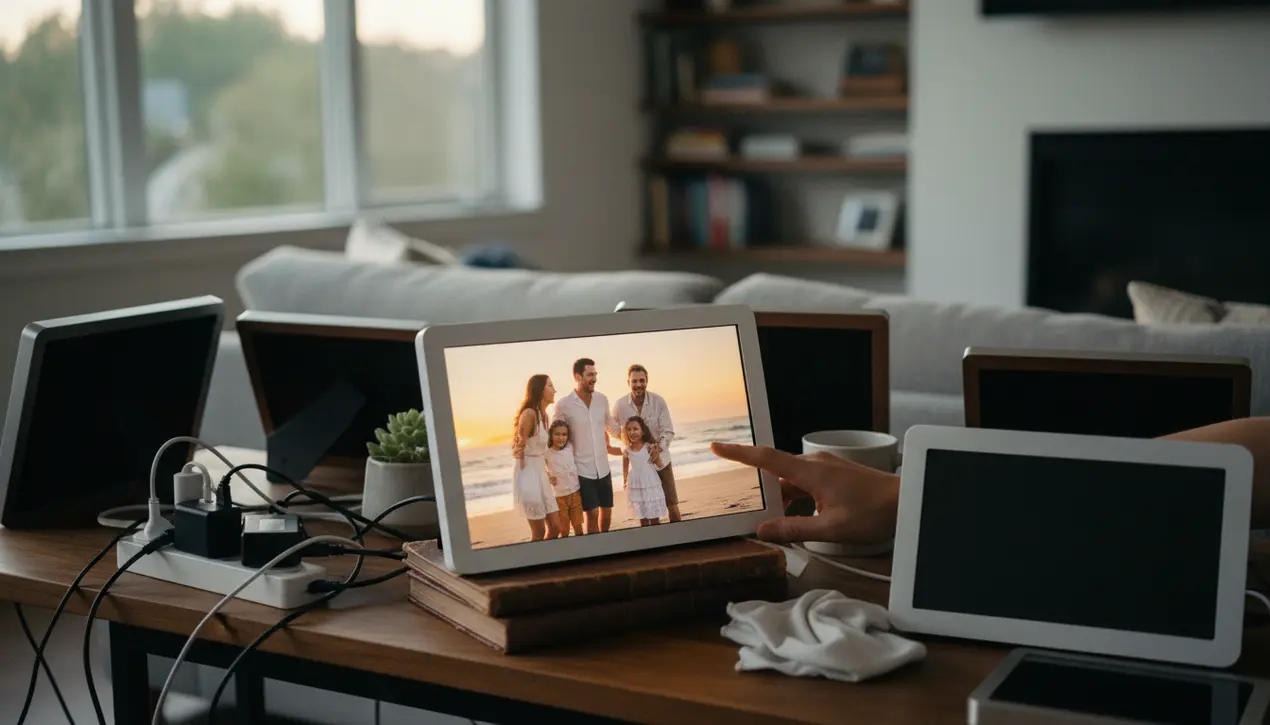
Otherauto & mobilityElectric Vehicles
The best digital frames for 2025
AN
Andrew Blake
11 hours ago7 min read4 comments
The best digital frames for 2025 represent a curious technological evolution, a modern answer to the age-old human desire to display cherished memories. On the surface, the concept seems deceptively simple: a decent screen, a straightforward method for uploading photos, and a design that doesn't scream 'cheap gadget.' Yet, as I dove into testing seven different models, I found a landscape littered with disappointing failures, reminiscent of the knock-off electronics that flooded markets in decades past. Amazon is awash with these subpar frames, luring buyers with low price tags only to deliver a frustrating experience that often ends with the device buried in a drawer, forgotten.The core challenge isn't just about displaying a picture; it's about creating a seamless, elegant portal to our personal histories. Most of us have thousands of photos languishing on our phones—snapshots of family gatherings, pets being adorable, vacation sunsets, and even that artfully crafted latte.These images tell the story of our lives, yet they remain trapped in the digital silo of a personal device, rarely seen by others or enjoyed on a larger canvas. While we could view them on a laptop or tablet, there's a distinct psychological comfort in having a dedicated space for these memories, a digital hearth for the home.This isn't a new impulse; it's the same reason we've always put photos in physical frames, only now the technology allows for a dynamic, ever-changing gallery. The quest for the perfect frame, therefore, becomes a search for a device that disappears into your home's aesthetic while brilliantly fulfilling its purpose.I prioritized screens that went beyond mere resolution specs. Many frames boast around 1,200 x 800 pixels, which sounds adequate, but the real differentiators were reflectivity, brightness, viewing angles, and color temperature.A frame with a mediocre resolution but excellent anti-glare coating and wide viewing angles often provided a more pleasing visual experience than a higher-resolution screen that washed out in ambient light. The physical design was equally critical; too many models felt flimsy, with cheap plastic, awkward stands, or bizarre design choices that made them look more like a child's toy than a piece of home decor.The best frames are chameleons, resembling traditional picture frames so convincingly that a visitor might not even realize they're digital. However, the most significant make-or-break factor was the software.I encountered companion apps so poorly designed and clunky they bordered on unusable. One particular model, the PixStar, forced me to navigate its Wi-Fi settings using an infrared remote control—a bafflingly archaic experience that felt like trying to program a VCR from 1995.When I attempted the QR code setup alternative, it directed me to a nonsensical Google search. I abandoned it immediately.Other frames were essentially repurposed Android tablets with a thin layer of custom software, which functioned but lacked elegance. The ideal user experience, I found, wisely divides control: simple on-frame adjustments for basic functions, with the heavy lifting of photo management handled effortlessly through a polished mobile app.A particularly insidious trend I uncovered was the proliferation of subscriptions for features that should be fundamental. One frame limited batch uploads to a paltry ten photos unless you paid a monthly fee.Others restricted syncing with popular services like Google Photos to a single album. Another offered no organizational tools whatsoever, presenting photos as an endless, chaotic scroll.While subscriptions for expansive cloud storage are understandable, these nickel-and-diming tactics for basic functionality feel like a revenue grab from companies that can't turn a profit on the hardware itself. For a device intended as a gift, especially for less tech-savvy relatives, a mandatory subscription is a deal-breaker.Financially, the sweet spot for a quality nine- or ten-inch frame starts at around $100, with the experience improving dramatically in the $150 to $180 range. The sub-$100 market is largely a minefield of compromised quality. The frames I ultimately recommend deliver on the promise: they are windows to our past, thoughtfully designed and software-enabled to make sharing memories with loved ones—whether they're across the room or across the country—as simple and joyful as the moments they capture.
#digital picture frames
#photo frames
#smart home
#tech reviews
#featured
#Engadget
Stay Informed. Act Smarter.
Get weekly highlights, major headlines, and expert insights — then put your knowledge to work in our live prediction markets.
Comments
Loading comments...
© 2025 Outpoll Service LTD. All rights reserved.